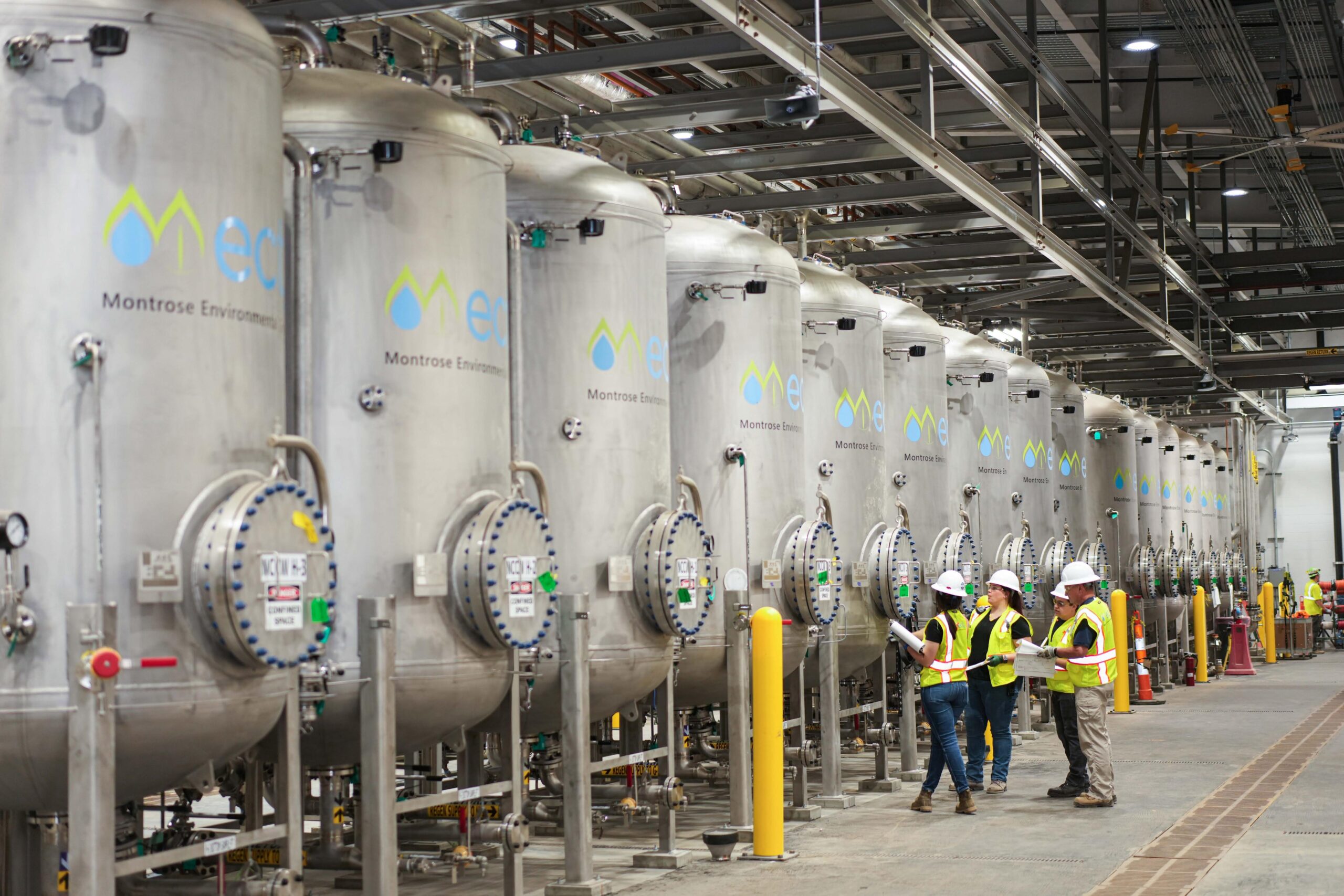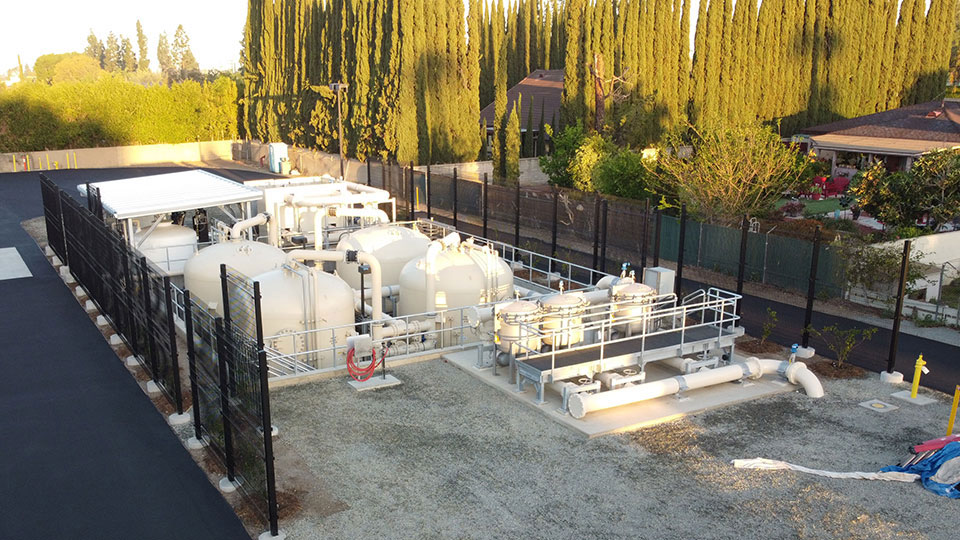Effective PFAS Waste Management in Agricultural Environments
Wiki Article
Your Guide to PFAS Treatment Technologies and Perks
The occurrence of PFAS contamination in water resources necessitates a thorough understanding of available treatment technologies. Each innovation not just targets details PFAS substances yet additionally plays a critical role in improving overall water quality and securing ecological stability.Understanding PFAS Contamination
Understanding PFAS contamination is crucial for addressing its pervasive effect on environmental and human wellness (m270 pfas treatment). Per- and polyfluoroalkyl materials (PFAS) are a team of synthetic chemicals widely made use of in various industrial and customer products as a result of their water- and grease-resistant properties. Generally discovered in firefighting foams, non-stick cookware, and water-repellent textiles, PFAS have gotten in the setting through production processes, wastewater discharges, and seeping from land fillsAs soon as launched, these compounds continue the environment, leading to prevalent contamination of dirt and water sources. Their unique chemical structure, identified by solid carbon-fluorine bonds, renders them resistant to destruction, resulting in a phenomenon recognized as "forever chemicals." Consequently, PFAS can gather in the body and the food web, possibly triggering negative health and wellness results, including body immune system disruption, developmental issues, and a boosted danger of particular cancers cells.
Regulative firms and wellness companies are progressively identifying the relevance of PFAS contamination, motivating efforts to keep an eye on, examine, and alleviate its results. Comprehending the paths of PFAS contamination is essential for notifying public plan and creating reliable strategies to secure both environmental and human health and wellness.
Review of Therapy Technologies
Various treatment innovations have been created to resolve the challenges positioned by PFAS contamination in water and soil. These technologies can be broadly classified into several classifications, each with its unique mechanisms and performance in eliminating PFAS substances.One famous strategy is ion exchange, which utilizes material materials to capture and eliminate PFAS from polluted water. This method is particularly reliable for short-chain PFAS and can attain considerable decreases in concentration degrees. Another modern technology, advanced oxidation procedures (AOPs), employs strong oxidants and ultraviolet light to break down PFAS right into less hazardous substances. AOPs appropriate for treating a wide variety of PFAS compounds but might call for careful optimization to make the most of efficiency.

Turned On Carbon Purification
Turned on carbon filtration is a widely made use of technique for the removal of PFAS from contaminated water, understood for its capacity to adsorb a wide variety of organic substances. This innovation employs turned on carbon, a highly porous material with an extensive area, which helps with the binding of PFAS particles through physical adsorption. The effectiveness of activated carbon in eliminating PFAS is influenced by numerous elements, consisting of the kind of carbon made use of, the get in touch with time, and the concentration of PFAS in the water.One of the benefits of turned on carbon purification is its flexibility; it can be implemented in different setups, such as granular triggered carbon (GAC) systems or powdered triggered carbon (SPECIAL-INTEREST GROUP) systems. GAC systems are generally used in larger-scale applications, while political action committee can be used in smaller sized or short-lived setups. The innovation is reasonably very easy to run and maintain, making it accessible for several water treatment facilities.

Ion Exchange Equipment
Ion exchange systems represent another efficient technique for the removal of PFAS from infected water, complementing approaches like triggered carbon filtration. These systems operate the concept of exchanging ions in the water with ions hung on a resin product. Ion exchange resins can be especially created to target the adversely charged PFAS substances, properly recording them and allowing cleaner water to travel through.Among the main advantages of ion exchange systems is their capacity to eliminate a variety of PFAS, including both long-chain and short-chain versions. This adaptability makes them ideal for numerous applications, varying from local water therapy to industrial processes. In addition, ion exchange systems can typically achieve lower detection restrictions for PFAS contrasted to a few other treatment approaches, therefore enhancing water quality.
Nonetheless, it is important to check and take care of the regrowth of ion exchange media, as the efficiency can decline over time as a result of saturation. Appropriate upkeep and substitute of the resin are important for maintaining the system's effectiveness. Generally, ion exchange systems give a trusted and reliable remedy for PFAS removal, contributing substantially to risk-free alcohol consumption water standards and environmental security.
Advanced Oxidation Processes
Advanced Oxidation Processes (AOPs) use powerful oxidants to properly review weaken PFAS substances in infected water. These ingenious treatment methods create extremely responsive varieties, such as hydroxyl radicals, that can damage down complicated PFAS particles Going Here right into much less harmful results. m270 pfas treatment. AOPs usually use mixes of ultraviolet (UV) light, ozone, hydrogen peroxide, or Fenton's reagent, enhancing the oxidation potential and boosting deterioration effectivenessThe key advantage of AOPs lies in their capacity to target a wide variety of PFAS substances, including both long-chain and short-chain variations. This versatility is necessary, as PFAS contamination frequently entails combinations of different compounds with differing chemical frameworks. Additionally, AOPs can be incorporated into existing water treatment systems, making them a functional remedy for lots of municipalities and industries.
However, the application of AOPs can be resource-intensive, requiring careful consideration of functional costs and energy intake. Additionally, while AOPs work in damaging down PFAS, they may not entirely eliminate all by-products, requiring further therapy steps - m270 pfas treatment. Generally, AOPs stand for an encouraging method for dealing with PFAS contamination, adding to cleaner water sources and enhanced public health protection

Conclusion
original site By choosing the ideal modern technology, neighborhoods can improve water top quality, shield public health, and minimize the environmental threats linked with PFAS exposure. Proceeded study and implementation of these techniques are vital for effective monitoring of PFAS contamination in influenced locations.Report this wiki page